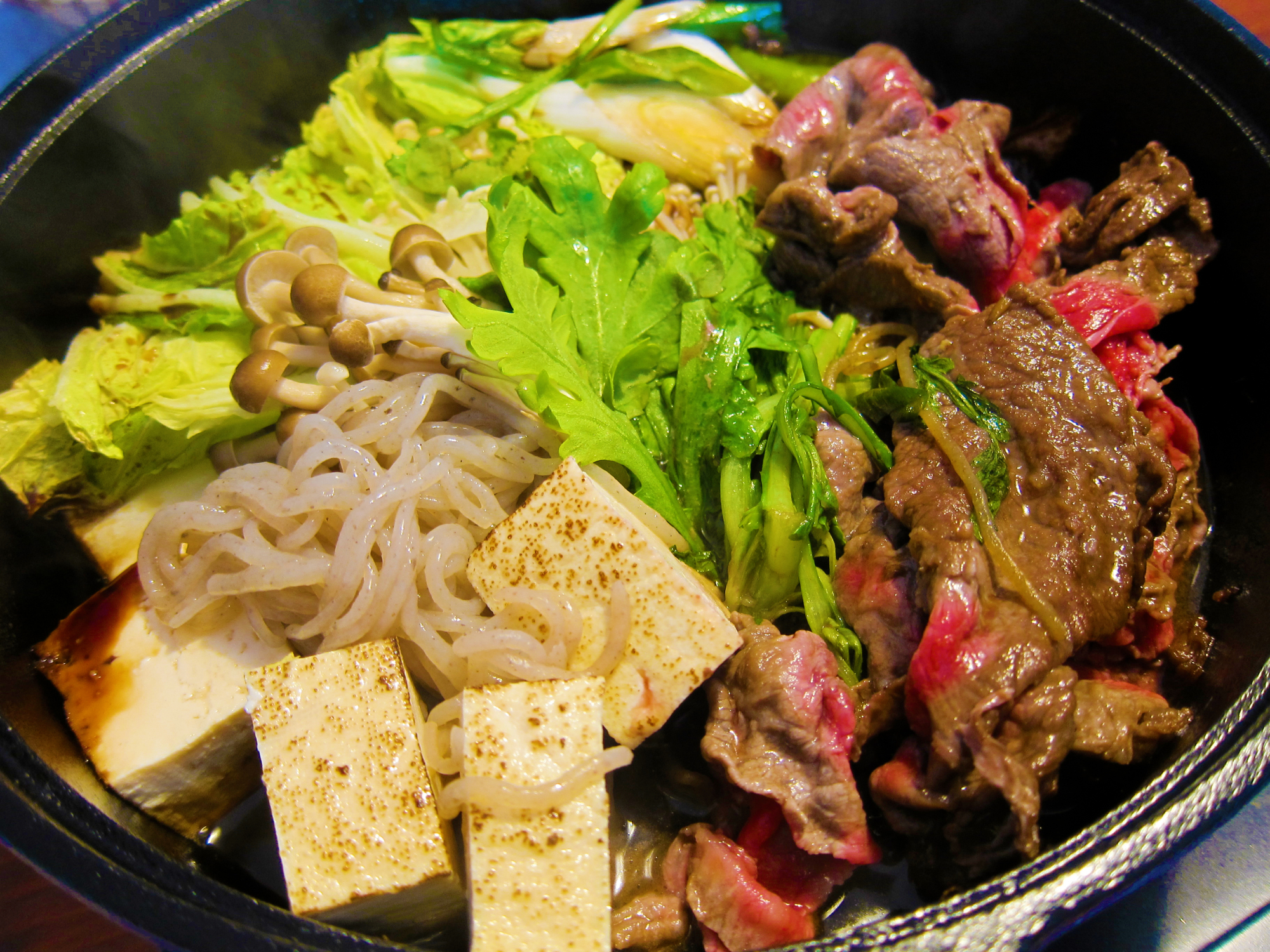Late last December I went to a Tokyo branch of my favorite butcher shop, Ningyocho Imahan, to buy some meat to make a roast beef for my family's New Year's meal. When I arrived I was surprised to discover an hourlong wait to order. The crowd outside had lined up to buy Imahan's exceptional (and expensive) beef, not for roasting, but for sukiyaki.
It was once common to make osechi ryōri, traditional New Year's food that is served in elaborate tiered boxes and comprised of various ingredients with symbolic meaning, from scratch. Today, most people order premade osechi from specialty shops and department stores. However, for many people it's still important to have a home-cooked New Year's meal that feels like a feast — sukiyaki is a prime choice.
The predecessor to sukiyaki was invented toward the end of the Meiji Era (1868-1912). Before this time, beef was rarely consumed in Japan, even in the days when many other animals were eaten, including deer and boar, mainly because cattle was not farmed for its meat or milk. During much of the Edo Period (1603-1868) Buddhist doctrine prohibited eating four-legged animals; the elite — the aristocracy, warrior class and wealthy merchants — found the idea of eating meat distasteful. But by the beginning of the 19th century, beef suddenly came to represent the modern, Westernized version of Japan that the government was eager to present to its new trading partners in Europe and North America.


















With your current subscription plan you can comment on stories. However, before writing your first comment, please create a display name in the Profile section of your subscriber account page.